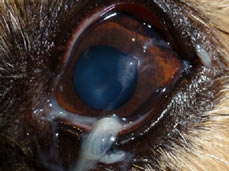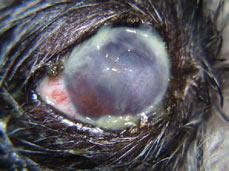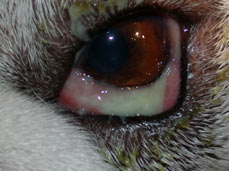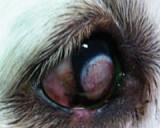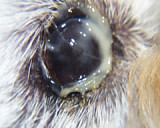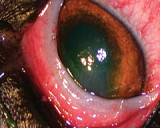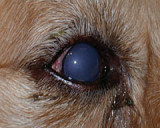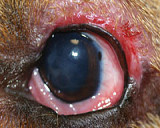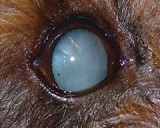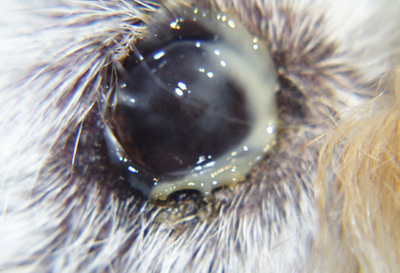 Diagnosis: Schirmer Tear Test Normal 15 mm wetting/min Dry eye can easily be overlooked. Always do a STT (schirmer tear test) in all cases of ocular discharge, conjunctivitis and corneal disease.
Diagnosis: Schirmer Tear Test Normal 15 mm wetting/min Dry eye can easily be overlooked. Always do a STT (schirmer tear test) in all cases of ocular discharge, conjunctivitis and corneal disease.
Breeds predisposed
1. West Highland White Terrier
2. Cavalier King Charles Spaniel
3. Shih Tzu
4. Miniature Schnauzer
5. Bulldogs
6. Bull Terrier
7. Pug
8. American and English Cocker Spaniels
9. Poodle
Management
Can either be medical or surgical. Medical treatment - i.e. drops/ointment is tried for some time before we consider surgery as an option Treating the symptoms Treating the cause Cyclosporin is used as a 1% topical solution three times daily for 3 weeks. Eighty percent of early KCS cases when treated with cyclosporin will return to normal. Make sure the eyes are cleaned clear of all mucous before the cyclosporin is used. Use the artificial tears to clean out the eye. If the eyes have improved then cyclosporin alone may only be required once daily or every second day. Most dogs will require prolonged therapy. Dogs that have had dry eye for more than 6 months and those with initial tear test readings of less than 4 mm wetting/minute tend not to respond to cyclosporin.
If there is a poor response to the initial Cyclopsorin treatment we may then consider a stronger form (2%) of the cyclosporin. This may irritate the eyes in some cases. If we find that the eyes become irritated by the cyclosporin solution we will then use cyclosporin ointment (Optimmune).
Surgery
Parotid duct transposition (PDT) can be considered when all alternative therapies have failed.
This is when: Over 80% of dogs are comfortable after this surgery. In about 5% of cases the eye is still dry after surgery, and in another 10% of cases the eye is too wet after PDT surgery. In these cases dermatitis may develop from the overflow of tears. This may require more surgery. Some dogs may require ointment after PDT surgery. Decreasing the size of the eyelid openings can help stabilise the tear film, and reduce corneal exposure e.g. medial and lateral canthorrhaphies, or a permanent mid tarsorrhaphy.
